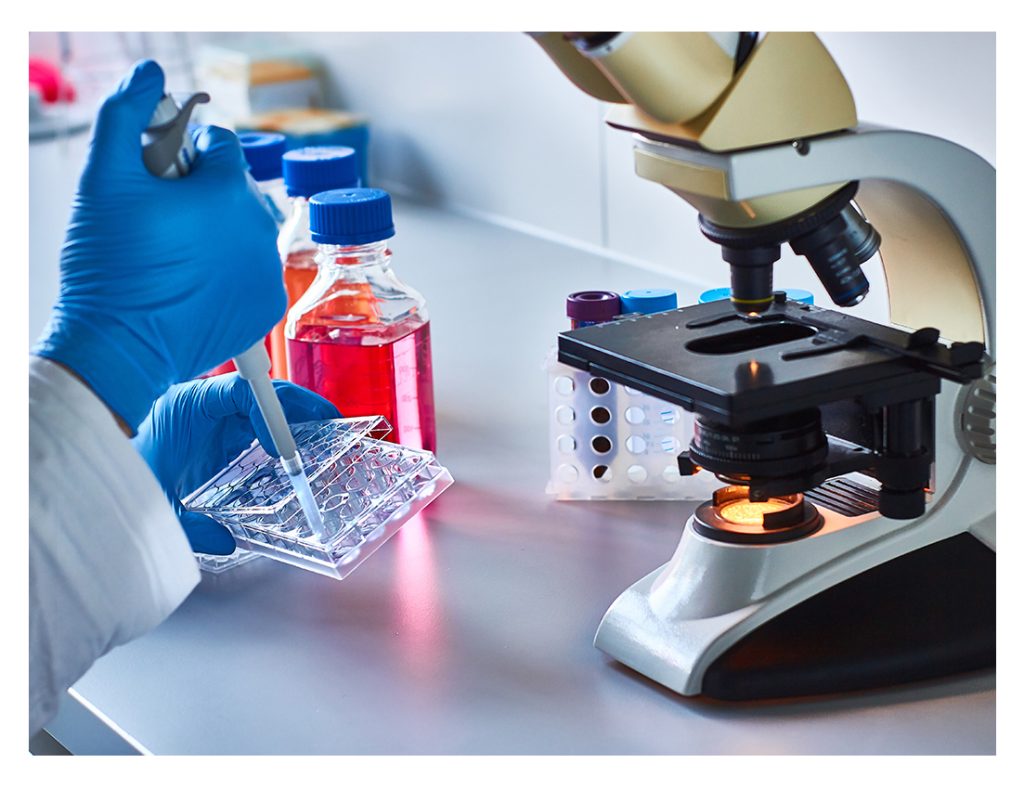Stem cell transplants are a medical procedure where cells damaged by chemotherapy are replaced by healthy stem cells. The treatment allows you to have a much higher dose of chemotherapy to treat your Waldenstrom’s macroglobulinaemia, meaning it can kill more cancer cells.
All blood cells develop from stem cells. These stem cells stay in your bone marrow and when they’re fully developed into blood cells, they enter your blood stream. Your bone marrow produces many millions of new blood cells every day.
Chemotherapy kills both abnormal and healthy cells produced by your bone marrow. This means that your body sometimes doesn’t have enough blood cells, which might cause serious side effects. If this happens, your doctors may decide to lower your chemotherapy dose, or shorten the course of chemotherapy.
However, some people need a higher dose of chemotherapy to kill the WM cells. This higher dose might treat your Waldenstrom’s macroglobulinaemia, but it can cause serious and sometimes permanent damage to your body and stem cells in particular.
In a stem cell transplant, your stem cells are damaged or killed by strong chemotherapy (also known as high-dose chemotherapy or conditioning therapy) and need to be replaced by healthy stem cells. This will give your bone marrow what it needs to recover and start making normal blood cells again.
There are two types of stem cell transplant: autologous and allogeneic. An autologous stem cell transplant uses your own, healthy, stem cells. These will be collected and stored ready to be transplanted after your chemotherapy. An allogeneic transplant is where the stem cells come from another person, or donor. This type of transplant is only extremely rarely used in Waldenstrom’s macroglobulinaemia. In this information, we will be talking about autologous stem cell transplants.

The treatment isn’t a cure, but it can lead to a long-lasting remission, which means the cells that cause your WM can stay at a very low level for a long time.


There isn’t much conclusive evidence about the use of stem cell transplants to treat Waldenstrom’s macroglobulinaemia, and it isn’t a common form of treatment for the disease.
Stem cell transplants are a very intensive form of treatment and aren’t suitable to everyone. It is very physically demanding and there are some potentially serious side effects that mean that the treatment is too risky for some people.
There are also some forms of chemotherapy that are toxic to stem cells and therefore mean that transplantation isn’t possible.
Stem cell transplants aren’t offered as a first-line treatment for WM, but they can be considered as a second- or third-line treatment. Your doctor might consider it if you have had a good response to previous treatment and are in good physical health.
The treatment is not recommended for anyone who had less than a partial response to chemotherapy, or anyone who has had more than three lines of treatment.
Having a stem cell transplant is more complex than other treatments, and there are things you’ll need to plan ahead for. Here we’ll outline the basics of what you can expect. Be sure that you understand all the information your healthcare team give you and don’t hold back on asking questions.
Not all hospitals can carry out stem cell transplants, so you may be referred to another centre. This might mean that you have further to travel. The weeks before your transplant will also be busy with lots of appointments so your healthcare team can test and prepare you for the treatment. You could spend a lot of time travelling.
You will have to stay in hospital for the treatment, which can last a few weeks. After this, recovery time can be many months, and even up to a year. Before having treatment, you might want to make plans to manage your life, such as:
Stem Cell treatment itself comes in three parts:
After the stem cell, you will be closely monitored as you will be at risk from side effects and infection. Some people stay in hospital for this period, whereas others will recover at home. It’s important that you stay in a clean environment and report any symptoms to your healthcare team so that you can get prompt treatment.
Once your blood count has returned to normal, your follow up will continue as you recover from the treatment.